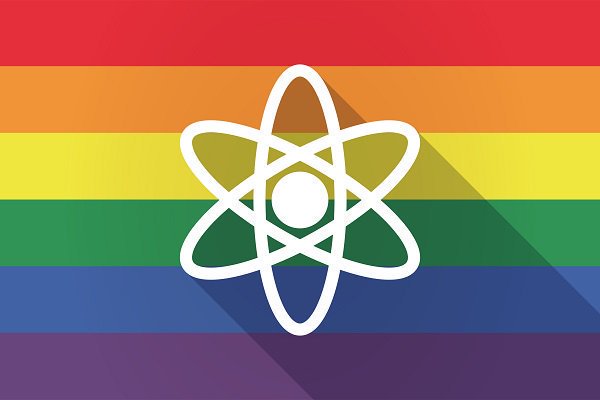Quantum Mechanics for the Gay Agenda
 |
| IOP |
Physics has always fascinated me because it challenges the way we see the world. But the more I learn about quantum mechanics, the more I realize it doesn’t just break the rules of classical physics. It breaks our ideas about identity, too.
In quantum mechanics, particles don’t behave the way we expect. An electron can be both a wave and a particle. A cat can be both alive and dead. A particle can exist in multiple states at once. This is called superposition (Griffiths, Introduction to Quantum Mechanics). It’s only when we observe it that it “chooses” a state. Until then, it exists in ambiguity.
As someone who's spent time in LGBTQ+ and POC communities, this concept of superposition feels deeply familiar. The idea that something doesn’t have to fit neatly into one box, that identity can be fluid, in between, or more than one thing at once, resonates with lived experiences that defy the binary. Gender nonconformity. Cultural hybridity. Queer relationships. The richness of our identities can’t always be pinned down. It’s a reflection of reality, grounded in both lived experience and science.
Superposition, in many ways, mirrors non-binary identity. A person can be masculine and feminine, or neither, or something entirely different. Just like an electron can be in multiple states until measured. Quantum physics doesn’t judge that as indecisiveness. It sees it as a fundamental truth of the universe.
Another quantum concept, entanglement, shows us how deeply connected we can be. When two particles become entangled, they remain linked across vast distances. Change one, and the other responds instantly, even if it’s galaxies away. Einstein called it “spooky action at a distance.” I wrote about that concept back in October of 2023, explaining the science behind how it works and why it matters. You can read more about it here. Today we know it’s experimentally verified (see Aspect, Dalibard & Roger, 1982). In queer communities, especially among chosen families, that kind of deep connection and mutual influence is a lived experience. We find family through shared struggle, mutual care, and collective resilience. Entanglement is not just a quantum trick. It is the emotional truth of queer survival.
Then there’s the Uncertainty Principle, developed by Werner Heisenberg in 1927. It tells us we can’t know everything about a particle at once. Try to measure its position exactly, and you lose its momentum. Try to measure its momentum, and its position becomes fuzzy. This reminds me of how people often expect us to explain ourselves fully: “What are you exactly?” “Where are you really from?” But like quantum particles, we can’t always give clear-cut answers. And we shouldn’t have to. Our truths are complex. Our trajectories aren’t linear. And physics agrees.
Even wave-particle duality, the idea that light behaves as both a wave and a particle, offers a metaphor for queer existence. Just like photons don’t choose one form over another, we don’t always live inside one identity. We shift, shimmer, and transform depending on context, expression, and evolution. This isn’t confusion but a kind of complexity that is fundamental to how the universe works.
This isn’t to say quantum mechanics is “queer” in the way we talk about people. Rather, queer and POC experiences offer a powerful lens for understanding a world that refuses simple explanations. In the same way physics asks us to let go of rigid assumptions, queerness invites us to challenge the rules, to exist authentically, and to embrace the uncertainty that comes with living outside predefined lines.
I also want to talk about representation. Physics has historically been dominated by white, cisgender men. But that is changing, and it needs to keep changing. Dr. Ramón Barthelemy, a physicist and LGBTQ+ advocate, has published research on the experiences of queer physicists and the challenges they face in academic spaces (Barthelemy et al., Phys. Rev. PER, 2016). He calls for a more inclusive and intersectional approach to STEM culture. Scholars like Chanda Prescod-Weinstein, a Black queer theoretical physicist, have pushed the boundaries of both science and justice. Her book The Disordered Cosmos (2021) ties particle physics to antiracist and feminist activism in brilliant, genre-defying ways.
There’s something revolutionary about realizing that the universe itself operates on principles of ambiguity, fluidity, and connection. For LGBTQ+ folks and people of color, that revelation is not just scientific. It is personal. The universe is not asking us to pick a side. It is already on ours.
So next time someone tells you that identity is “just social” or “not real,” you can say: tell that to a quantum particle. Because even the smallest building blocks of the cosmos know how to live in superposition.
⚤⚥⚩
Sources Cited
Griffiths, D. J. Introduction to Quantum Mechanics, 2nd ed. (Pearson, 2005).
Aspect, A., Dalibard, J., & Roger, G. “Experimental Test of Bell’s Inequalities Using Time-Varying Analyzers.” Phys. Rev. Lett., 49, 1804 (1982).
Heisenberg, W. “Über den anschaulichen Inhalt der quantentheoretischen Kinematik und Mechanik.” Zeitschrift für Physik, 1927.
Barthelemy, R. S., Van Dusen, B., & Henderson, C. “Hidden Sexuality: Queer Physics Students.” Phys. Rev. Phys. Educ. Res., 12, 020119 (2016).
Prescod-Weinstein, C. The Disordered Cosmos: A Journey into Dark Matter, Spacetime, and Dreams Deferred. (Bold Type Books, 2021).
- Get link
- X
- Other Apps


Comments
Post a Comment